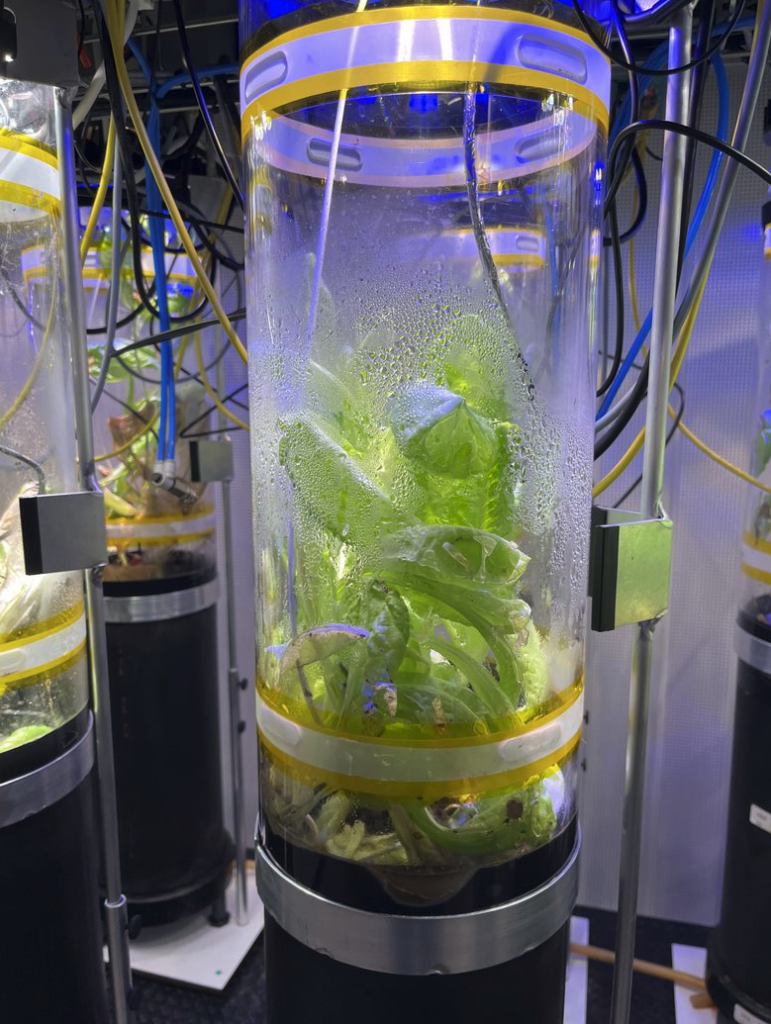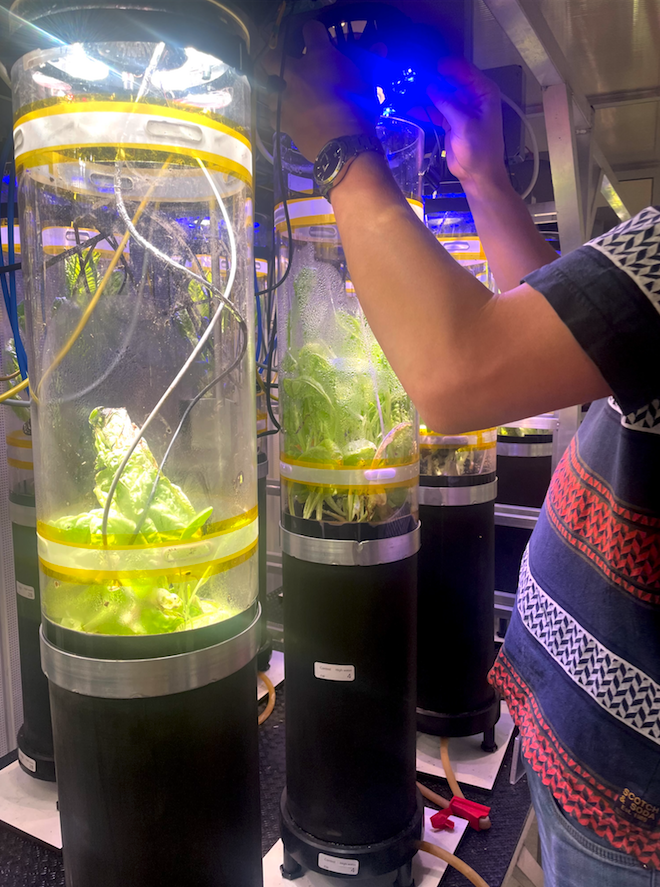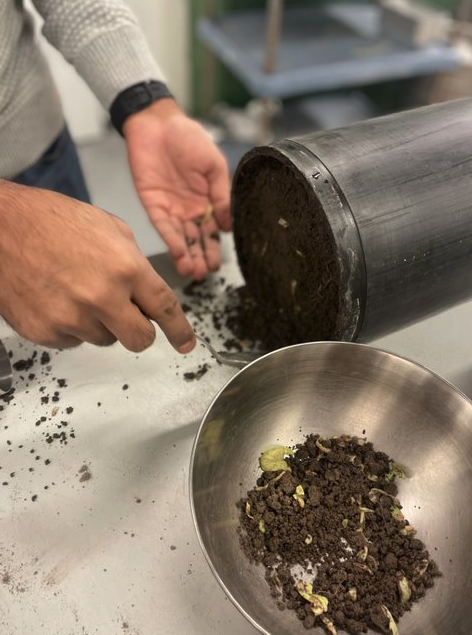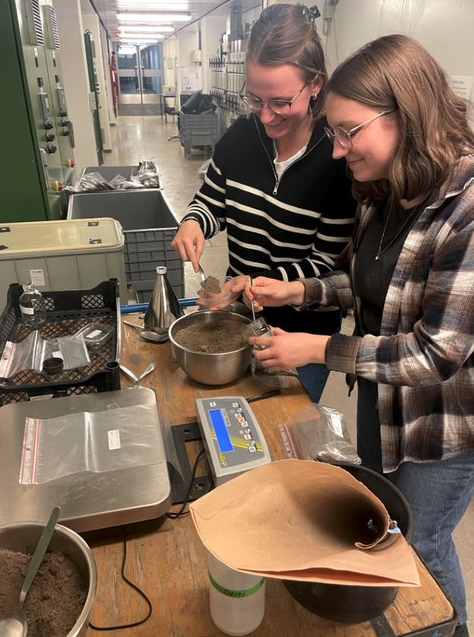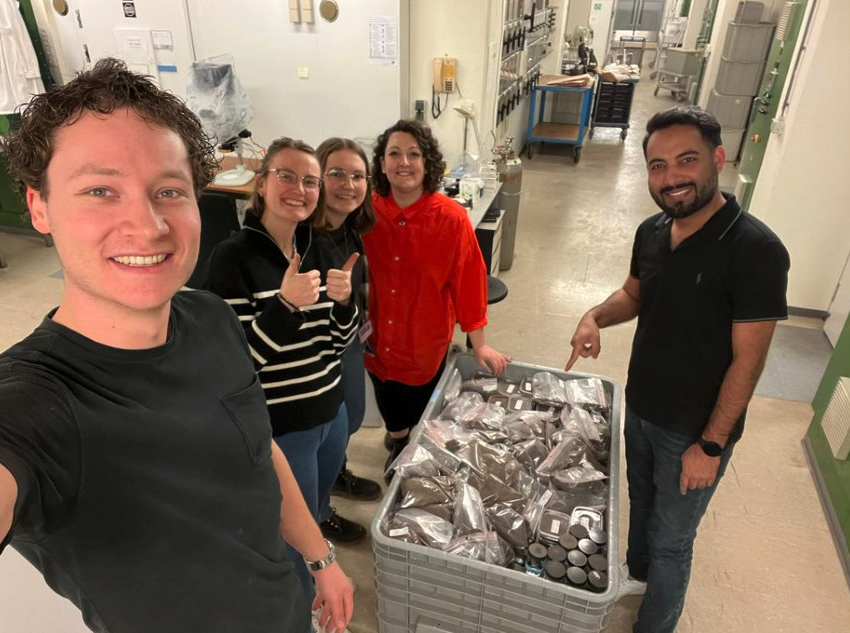The CLIMECS facility
CLIMECS stands for CLImatic Manipulation of ECosystem Samples. It is a facility established at the Vrije Universiteit Amsterdam to test the impact of different stressors on soil ecosystems. There is space for 40 columns which are designed to simulate ecosystems – with soil, vegetation and animals – and are individually controlled for different environmental conditions, such as temperature and precipitation.
The CLIMECS facility with all 40 columns at the end of the experiment.

